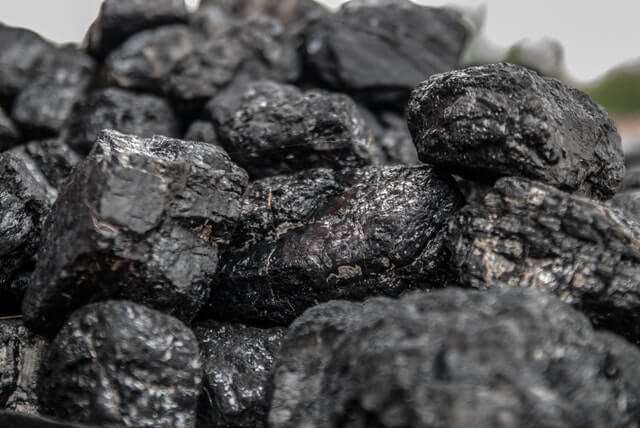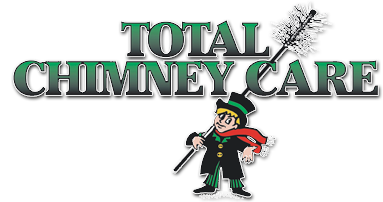If you own a fireplace, you’ve probably heard your chimney company refer to creosote a number of times. It’s clear that this substance is bad for your chimney and that it needs to be regularly removed, but many find themselves unaware of what it actually is – what it looks like, how it forms, the damage it does, etc. At Total Chimney Care, we feel that our customers should be informed and educated on it all when it comes to their fireplace, which is why we’re here to tell you a little bit more about creosote and why it’s a threat to your system.
Read below to get the facts and, if you are still experiencing questions, please contact our team to learn more. We’re always here to help!
What It Looks Like

Creosote can take on a few different forms, depending on how your fires burn and how long it has been in your chimney. If you only burn well-seasoned wood, keep your fires nice and hot, and regularly invest in chimney sweepings, then the creosote that accumulates in your chimney should remain light, flaky, and easy to remove. In these cases, your sweep should be able to use basic tools and techniques to clear your chimney and ensure it stays safer for regular use.
Other times, creosote will take on a more sticky or tar-like texture. In these cases, removal is a bit more challenging, but can still be tackled with ordinary equipment and products. No matter which of the two forms your creosote takes, it is always highly flammable, which means removal is a must!
Finally, there’s stage three, or glazed, creosote. This type is hard, glossy, and shiny, and it needs to be approached a bit differently, otherwise, your structure may experience damage. It will take the application of special chemical treatments to get the texture back to a more workable state, after which your sweep can more easily get rid of it.
The Dangers Of Chimney Fires
Like we said, creosote is highly flammable. This may not seem like a big deal since heat and smoke are already flowing through your chimney on a regular basis, but the truth is that these events can cause a lot of damage. You see, your masonry and chimney liner are both strong and sturdy, but they simply aren’t built to withstand the intense temperatures that accompany direct contact with actual flames.
Should one occur, you’ll be looking at a lot of time-consuming and expensive repair and reconstruction work. You also face a serious risk of smoke, carbon monoxide, and flames entering your home. Decay and deterioration create clear pathways for these substances to escape into your living space, and your liner will face significant damage, as well. All in all, your family will be facing serious danger should you light fires after a chimney fire has occurred.
Now, some chimney fires are loud, obvious events, but most of the time they occur slowly and quietly, meaning many homeowners continue using their fireplace without realizing they are at risk by doing so. Because of this, doing everything possible to avoid them is essential. Along with this, be sure to invest in annual inspections, especially before the start of your burning season. This way, your sweep will be able to detect any issues well ahead of time, and you can have them resolved before lighting any fires.
Avoiding Build-Up
If you use your fireplace at all, then at some point you will require chimney sweeping services. There is, unfortunately, no way to avoid the formation of creosote altogether, and investing in regular maintenance is simply a part of owning a fireplace. That being said, there are things you can do to slow the rate at which it accumulates. Keep in mind the following tips:
- Only burn dry, well-seasoned wood in your fireplace. No trash, wet logs, or outside debris should be thrown into the fire.
- Keep your fires burning hot. The cooler they are, the smokier they’ll be, and you’ll notice higher creosote deposits in the end.
- Ensure the damper is open wide enough so that your fires get plenty of oxygen. This will also guarantee better airflow, which prevents build-up from occurring.
- Invest in regular care from a CSIA certified chimney sweep.
- Never burn artificial logs.
Our Team Of Experts Can Remove Your Creosote In No Time
If your annual inspection revealed excess creosote in your flue, then the time to have it removed is now. Like we said, avoiding sweeping services can put your home and family at serious risk, and it’s not worth taking any chances when it comes to the safety and wellbeing of loved ones. Ensure your holiday season is the best one yet by relying on our team of experts from start to finish. We would be happy to help you out every step of the way!
Our crew has been serving the area for well over 20 years now, and our long list of positive reviews speak for themselves. There is simply no one better to trust, and our team is dedicated to staying informed, educated, and up-to-date on it all. Ready to work with the best? Snowy weather is arriving soon, so reach out today. We’re ready to take your call!
